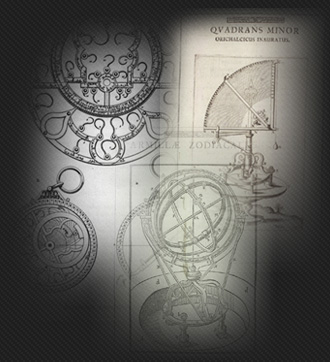
"When the Pleiades, daughters of Atlas,
are rising begin your harvest,
and your ploughing when they are going to set.
Forty nights and days they are hidden
and appear again as the year moves round,
when first you sharpen your sickle."
Hesiod
History of the armillary sphere
Human beings have always watched the heavens. In the early Babylonian and Egyptian civilisations mere observation gave way to study.
Our forefathers regarded the firmament with its annual movements of the sun, moon, planets and stars as the home of the gods, yet at the same time they found it to be of practical use.
Very early on people recognised the connections between earthly events and certain positions of the heavenly bodies. In this sense Babylonian astronomy, with its many years of observations and careful records, laid the foundation for Greek astronomy. Later the Pythagoreans initiated the phase of transition from observation to an astronomy of calculation.
The geometric determination of the paths of the heavenly bodies developed into an algebraic astronomy. This led to the decisive breakthrough for the beginning of a mathematical determination of these paths. The way was prepared for the first well-founded astronomical view of the universe in the history of humankind.
Measuring devices had to be created for fixing the positions of the stars and planets. Furthermore, people wanted simple technical aids for representing clearly the complex movements. This gave rise to protractors and maps of the heavens. More and more elaborate techniques for processing materials increased the precision of the astronomical instruments and finally resulted in the development of astrolabes, armillary spheres and quadrants. Armillary spheres developed into the most important astronomical devices for measuring and observing movements of the celestial bodies. But after the invention of the telescope by Jan Lippershey in 1608 and its use by Galileo to observe the night sky, armillary spheres were only regarded as useful demonstration instruments. Yet even this era came to an end in the 19th century, after which they were all but forgotten.

